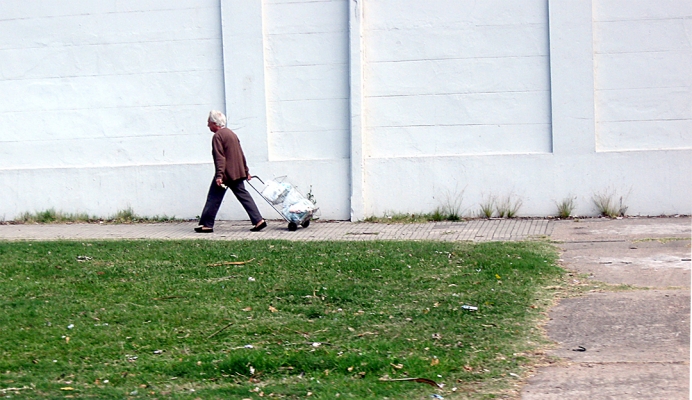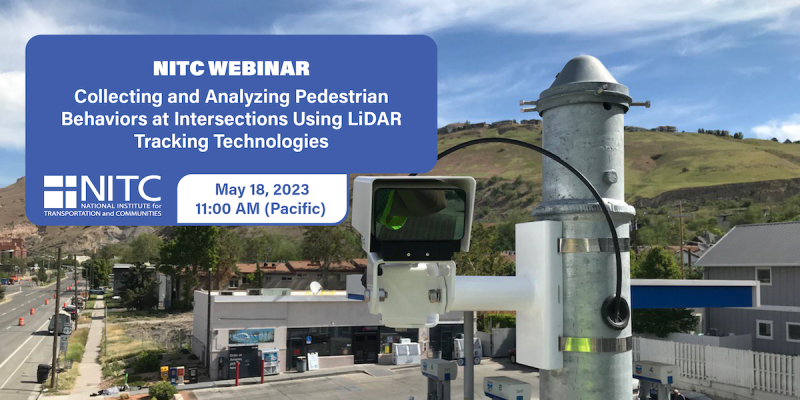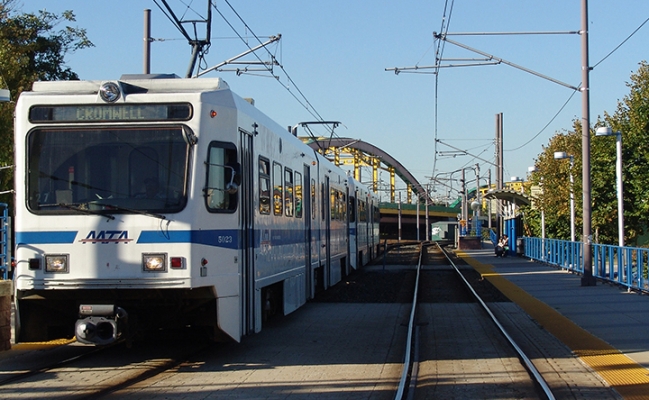View slides
WEBINAR VIDEO
WEBINAR SLIDES
Missed the presentation or want to look back at the slides? View the slides here.
WEBINAR SUMMARY
This webinar discusses research exploring how social identity factors (race and gender) influence drivers’...
Read moreThe video begins at 0:34.
View slides
Speaker: Joseph Broach, Ph.D. Candidate, Portland State University
Topic: Trick or Treatment? Impact of Route-Level Features on Decisions to Walk or Bike
Summary: Some travel routes attract people walking and cycling, while others may scare them away. What features of street environments are most important, and how do available routes affect decisions to bike or walk on a specific trip?
Research to date has focused on either large-scale areal measures like "miles of bike lane nearby" or else has considered only shortest path routes. Neither method is suited to capturing the impact of targeted route-level policies like neighborhood greenways. This session will present a new technique for measuring bike and walk accessibility along the most likely route for a given trip. The method is applied to travel data, and results provide new insight into the relationship between route quality and travel mode choice.
The video begins at 2:12.
Abstract: A new way of measuring Level of Service for bicycles, pedestrians, and transit is planned for the next Highway Capacity Manual. Are these the right tools to help us plan and build the system we want? If not, what answers do these tools give us and how should we use them? This presentation will review the approaches to multi-modal Level of Service at the national and local levels and discuss efforts to validate the HCM methods. It will also cover the effect of our LOS policies on climate change and explore ways that we might tweak our analysis to get a more accurate picture of the transportation system for all users.
Bio: Seleta Reynolds plans, funds, and implements bicycle and pedestrian projects as a consultant for the Seattle office of Fehr & Peers. Seleta contributed to the national Safe Routes to School toolbox and has served as a guest lecturer on transportation planning for San Jose State University, Portland State University, and UC Berkeley. She serves on the Transportation Research Board Pedestrian Committee and as the President of the Association of Pedestrian and Bicycle Professionals. One of her favorite side projects was a collaboration with artists Steve Lambert and Packard Jennings to imagine the future of transportation for the Art on Market Street project in San Francisco. Prior to joining Fehr & Peers in 2001, she was the bicycle and...
Read morePRESENTATION ARCHIVE
OVERVIEW
The aim of this research is to investigate pedestrian behavior at signalized intersections using state-of-the-art LIDAR sensing technologies and to use this data, along with vehicular data, to develop a more effective multimodal signal control system.
In the presentation, the presenters will describe a novel method of collecting pedestrian crossing behaviors at signalized intersection, discuss the findings and implications of data analytics, and introduce a novel approach to dynamic flashing yellow arrow mechanisms to reduce the conflict between left turn vehicles and crossing pedestrians.
KEY LEARNING OUTCOMES
- Understand the framework of LiDAR sensing solutions;
- Understand how to collect pedestrian behaviors at intersections;
- Understand how to provide new protection for crossing pedestrians with object-tracking technologies.
THE RESEARCH
This webinar is based on a study funded by the National Institute...
Read moreThe video begins at 0:29.
View slides
Speaker: Brian Saelens, Professor of Pediatrics and Psychiatry & Behavioral Sciences, Seattle’s Children’s Hospital & University of Washington
Topic: Links Between Public Transportation and Physical Activity (Effects of LRT on Physical Activity Based on Seattle GPS Study)
Summary: This seminar will explore the empirical evidence regarding the links between the use of public transportation and physical activity, with a specific focus on using integrated device and self-report methods to identify travel modes and physical activity.
Bio: Brian E. Saelens, Ph.D. is a Professor of Pediatrics and Psychiatry & Behavioral Sciences at the University of Washington and Principal Investigator at Seattle Children’s Research Institute. Dr. Saelens is a clinical/health psychologist. His interest areas include obesity treatment and prevention, especially in environmental factors and policies that influence physical activity and eating behaviors in children and adults. He has published over 150 peer-reviewed original investigation and review articles.



